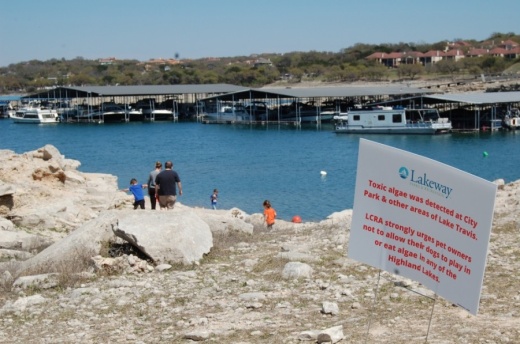Harmful blue-green algae, more accurately referred to as cyanotoxin, continues to be present in the Highland Lakes, according to a May 19 news release from the Lower Colorado River Authority.
Aglae samples collected May 11 from the Travis Landing region of Lake Travis tested positive for dihydroanatoxin-a—a type of cyanotoxin that can be dangerous when ingested by animals or humans.
LCRA first reported detecting cyanotoxins in Lake Travis in February after receiving reports that four dogs became ill after swimming in the Hudson Bend section of the lake.
Every sample collected since February has contained dihyoanatoxin-a, according to the LCRA’s most recent update. However, the current toxicity levels are not as high as earlier reports.
“We are pleased to see the level of toxicity is continuing to decline, but even a small amount of this toxin can be dangerous if ingested,” John Hofmann, LCRA executive vice president for water said in the release.
Despite the drop in toxins, Hofmann said people should avoid contact with algae in the Highland Lakes and should keep their pets from playing in and ingesting the material.
Symptoms of exposure in dogs can appear within minutes of exposure and can include drooling, vomiting and difficulty breathing, according to LCRA.
Animals are more susceptible to illness as they are more likely to ingest and play in shallow water. Still, people can experience eye and skin irritation as a result of blue-green algae, and more severe reactions can occur if large amounts of untreated lake water are ingested.
Under federal guidelines, water utility operators are responsible for the testing and removal of harmful algal toxins from drinking water supply. LCRA has not reported a threat to the public water supply.
More information on blue-green algae, including photos can be found on LCRA’s algae webpage.





